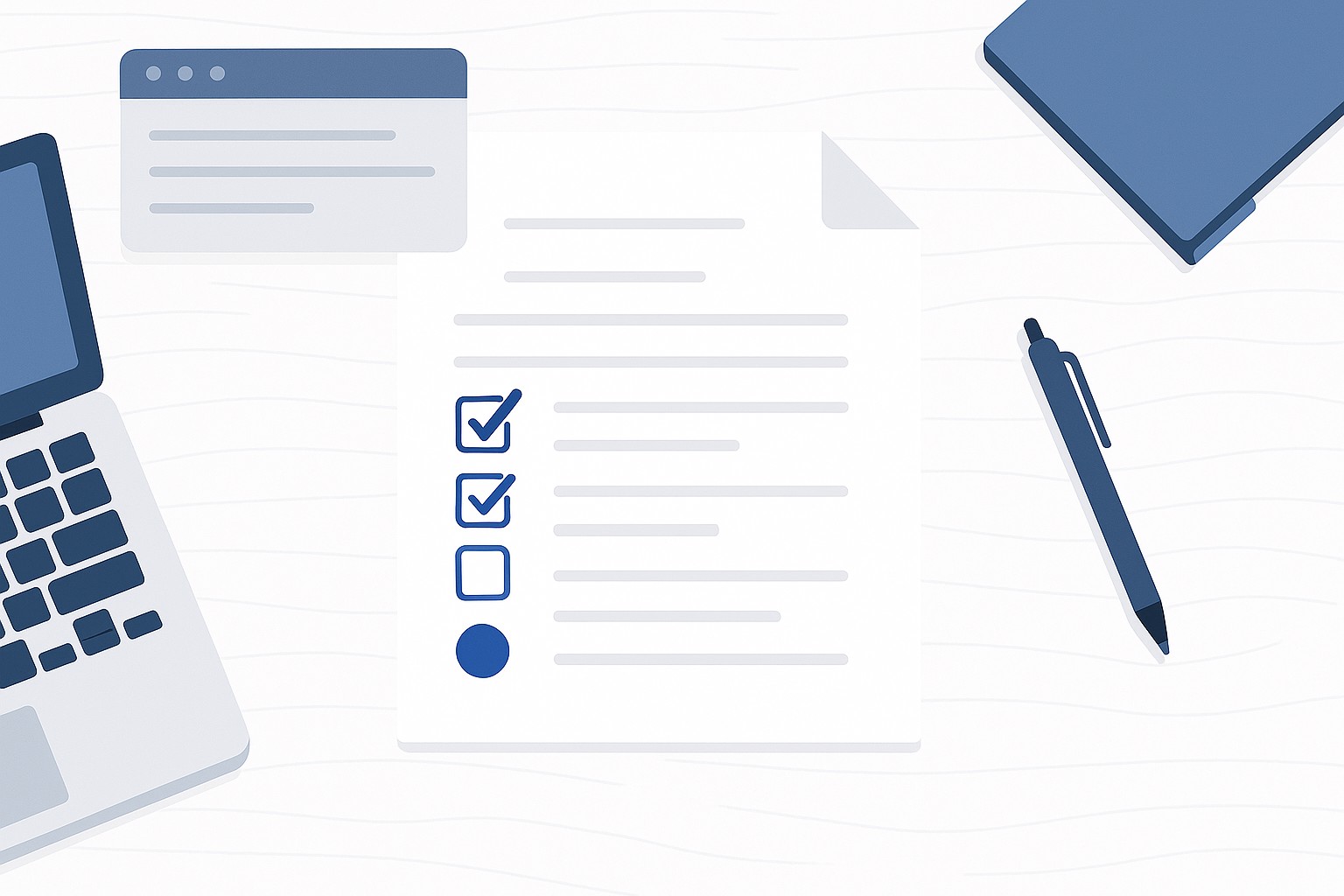How to Write a Call for Papers for a Conference
Are you looking for tips on how to write a call for papers for a conference?
Writing a compelling call for papers (CFP) can make or break an academic conference. Whether you're organizing your first event or refining a long-standing international conference, the way you frame your call directly affects the quality and quantity of submissions you receive.
In a digital age where submission portals streamline workflows and competition for attention is intense, knowing how to write a call for papers for a conference is more crucial than ever. You’re inviting the academic community to contribute to a shared goal, align with your conference theme, and publish research that may influence future discussions in your field.
This guide is created for conference organizers aiming to attract high-quality proposals, confidently manage the peer review process, and establish a solid foundation for meaningful conference proceedings. From selecting the appropriate format and tone to writing tips, we’ll guide you through everything you need to know.
Let’s explore how to write a call for papers for a conference that will resonate with your peers.

Core Elements Every CFP Must Cover
A well-structured call for papers (CFP) is one of the most important tools for conference organizers. It sets expectations, provides clarity, and drives high-quality abstract submissions and paper submissions, ultimately contributing to the success of the academic conference. These are the aspects of a CFP that should never be overlooked.
Conference Identity and Promise
Start with the fundamentals: the conference name, its acronym if applicable, the host institution, exact conference dates, format (in-person, virtual, or hybrid), and the city or platform.
Then, define the core idea behind the event. A one-sentence summary of the conference theme should clearly explain what the event is about and why it is on point now. This concise yet strategic line enables researchers to quickly assess relevance and potential impact.
Scope and Target Audience
Be clear about the topics you're requesting. Use 5–10 bullet points that start broad and become more focused on specific areas. This approach helps filter out submissions that don’t fit and increases the likelihood of receiving well-matched content.
Also, describe who should submit. Are you targeting early-career researchers, established academics, or multidisciplinary teams? Be clear about what types of contributions are welcome, such as posters, short talks, full papers, and other formats.
Accepted Submission Types and Deliverables
Outline what formats you accept: abstracts, full papers, workshops, demos, posters as well as the required deliverables for each.
For example:
- Abstract = 250–300 words with 3 keywords
- Full paper = PDF + editable source file
- Poster = visual file + 150-word summary
Clarifying this early supports better submissions and avoids last-minute confusion during the submission process.
Formatting and Content Rules
Be precise. State the required word counts, acceptable file formats (PDF, DOCX), font size, and margin settings. These details are important.
State your preferred citation style, such as APA, IEEE, and Chicago, and indicate if references are part of the total word count. If your peer review model is anonymous, list the anonymization rules: no author names, affiliations, or acknowledgements. Even self-citations should follow a neutral format.
Submission Process and Required Metadata
Lay out the full process step by step. Here is a checklist that can help:
- Upload file
- Enter title
- Add authors and affiliations
- Choose keywords and track
- Designate a corresponding author
- Include ethics disclosure and conflicts of interest
Furthermore, clarify which metadata fields are mandatory in your submission portal: title, abstract, research question, methodology, keywords, and ORCID (optional). This improves downstream tasks, such as reviewer assignment and scoring.
Review Process and Evaluation Criteria
Explain your review process clearly. State whether you use single-blind, double-blind, or open review, and how many reviewers will evaluate each submission.
Then outline your evaluation criteria. These typically are:
- Originality
- Methodology and rigour
- Significance to the field
- Clarity and structure
- Fit with the conference theme
Add thresholds if applicable (e.g., Accept / Revise / Reject) and share the review timeline: how long the review phase lasts and when authors can expect notifications.
Proceedings, Publication and Rights
Let researchers know what happens after acceptance. Will accepted conference papers be published in conference proceedings, assigned a DOI, or submitted to a journal special issue?
Clarify your publication policy: Does the author retain copyright? Is preprint posting allowed? Can authors choose a Creative Commons license?
Finally, detail the camera-ready process, including file types, formatting checklist, and final due date.
Important Dates and Timeline
Keep this section short, structured, and visible. For example:
Submission deadline → Review notification → Camera-ready/full paper due → Registration deadline → Conference dates
Researchers often scroll straight to this section. Make it impossible to miss.
Accessibility, Ethics and Data Transparency
Make your event welcoming and responsible. Provide an accessibility statement, whether you offer closed captions, language support, or accommodations.
Specify your ethics and data policy, outlining expectations regarding reproducibility, dataset availability, and disclosures for AI/tool use (especially in the methods section). Be sure to offer clear conflict of interest guidelines for both authors and reviewers.
Contact, Support and CTA
End with direct next steps. List a dedicated contact email, a link to your FAQ if available, and a clear call to action with your submission portal link.
Make it stand out; it should be one simple sentence like: Submit your abstract or paper through our portal today.
Writing and Conversion Tips
A call for papers does more than list dates and guidelines; it persuades researchers to take action. The way you present information directly affects how many proposals make it through your submission portal. From the headline at the top to the final call-to-action, every detail matters for clarity, credibility, and conversion.
Hero Headline and Opening Sentence
Keep your headline sharp: pair the conference name, year, and one clear benefit. For example: “ICRS 2026: Advancing Sustainability in Global Supply Chains.” Stay under 12 words for maximum impact.
Your opening line should immediately answer who the event is for, what it covers, and why now. Use active voice and echo your conference theme to reinforce purpose.
Scannability and Information Hierarchy
Most researchers skim before they commit. Structure your CFP so the most important details are impossible to miss:
- Lead: What the conference is about + immediate CTA
- Scope: Clear topic bullets
- Submission specifics: Concise requirements
- Dates: Simple timeline
- Review & Proceedings: One or two lines
- Contact/CTA: Easy next step
Use bullets, bolded micro-heads (“Submission deadline: May 12”), and short paragraphs of one to three lines. On web pages, place the submission button above the fold and repeat it at regular intervals.
Subject Lines and Email Open Tactics
Subject lines drive visibility for your call for abstracts emails. A proven formula combines acronym, action, and deadline: “ICRS 2026: Submit abstracts by Nov 12.”
Run A/B tests contrasting urgency (“Submit by Nov 12”) against benefits (“Join leading AI researchers – Submit by Nov 12”). In the preheader, reinforce the CTA or deadline for extra clarity.
Tone, Voice and Microcopy
Adopt a tone that is authoritative but inviting, especially since many readers may be from international backgrounds. Clarity always beats flourish.
Use microcopy to guide submissions: short, practical instructions in forms like “Briefly summarize your methodology (max 100 words).” Ask explicitly for elements such as the research question and methodology summary to enhance submission quality.
CTA Wording and Placement
Your calls-to-action should always use verbs: “Submit Abstract,” “Start Paper Submission,” “Upload Full Paper.”
On a webpage, place CTAs in three spots: the hero section, after submission rules, and at the page bottom. For email campaigns, add a CTA button near the top and a link in the footer.
Encouraging Quality and Deterring Low-Fit Submissions
A high submission volume only benefits if the quality remains consistent. Request authors to provide a one-line research question and a two-line methodology summary in the form. Provide suitable examples (short sample topics) to guide them without supplying templates. A
dd a brief checklist to the form requiring authors to confirm they have proofread, anonymized, and followed the citation style. This helps reduce avoidable rejections and eases the review process.
International and Accessibility Considerations
Design with inclusivity in mind. Use plain English and avoid idioms. Always specify time zones alongside deadlines. Provide a contact point for non-native speakers needing language support. State available accessibility options (captioning, visa-support letters, or travel grants) clearly and succinctly.
Urgency Without Coercion
Deadlines drive action, but coercive language damages credibility. Maintain consistent state time zones and avoid vague time extensions. Factual urgency works best: “Deadline: 48 hours left (UTC+0)” outperforms “Last chance!” in both tone and conversion.
Measurement and Rapid Experiments
Track performance like a marketer. Key metrics are usually email open rates (for subject lines), click-through rates to the submission portal, and form completion rates from start to finish.
Experiment quickly with A/B tests: subject line variations, CTA wording, or including a short “fit example.” Small tweaks often lead to measurable lifts in abstract submission rates.
Ready to Launch Your CFP?
A well-written call for papers is the difference between scattered submissions and a strong program that reflects your conference theme. By focusing on clarity, completeness, scannability, and actionable CTAs, you give researchers exactly what they need to prepare, and you give your review process the structure it requires.
Now it’s time to move from planning to execution. Start by building on proven frameworks and equipping yourself with the right tools.
- Download Fourwaves’ call for papers template to structure your call step by step and ensure nothing is overlooked.
- Use Fourwaves abstract management software and peer review software to handle submissions, deadlines, peer review, and final proceedings in one place. With automated workflows, reminders, and a clear submission portal, you’ll save time and simplify the process for authors and organizers alike.
Launching a CFP doesn’t have to be overwhelming. With the right structure and support, you can focus on what matters most: curating valuable research and bringing your academic community together.


